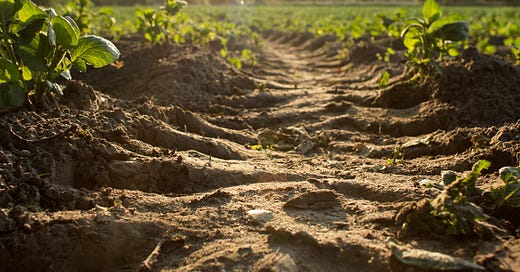Can gut bacteria save livestock & poultry? Yes & here's why.
Prime Future 031: the weekly newsletter highlighting trends in animal protein
Here’s the thing: I'm bullish all things microbiome. Soil. Plant. Animal gut. Human gut.
Pressure to reduce antibiotic use has led to the launch of more companies bringing non-antibiotic pre/pro/post-biotics to the market to “support gut health”.
The obvious reason is that producers simply have to figure out how to offset lost performance from reduced antibiotic use. Look at the US poultry industry that has gone from <10% No Antibiotic Ever production to ~60% NAE....in less than 5 years. Presumably swine and cattle will follow at some point and to some degree, though that is tbd.
But in an industry accustomed to FDA regulated products brought to market with impeccable rigor by pharma co’s, most microbiome products have been viewed by producers as foo-foo dust….rightfully so. Here's why:
The approval process to launch a non-antibiotic product means the manufacturer can make no claims about impacts on animal health. What's the benefit to the animal? Sorry, we can't say…but it helps, trust us.
Microbiome products typically brought to market with limited data, either in # of studies or # of head per study. So you did 1 study with 22 birds in Italy and you want to sell to US producers? Adorable but no…
Because of #2, there is limited guidance about recommended use on these products. "Here ya go producer, we recommend you use this product but good luck finding the dose that leads to the best response, most cost effectively"
Truly, its been the wild west out there with microbiome products. And it has damaged the category's brand with livestock & poultry producers while raising the skepticism hurdle for future products.
And yet, I’m optimistic the category’s wild west era will soon end. Why?
Technology.
Look at our friends over in the crop side of the world where soil microbiome has been a fringe topic for a while, slowly making its way to the mainstream. An entire generation of technology companies are bringing precision to the soil microbiome through analytics, covering the whole range of measuring, analyzing, and ultimately enabling precision decisions to improve the soil microbiome to unlock productivity and (hopefully) profitability. Soil tech startups like Trace Genomics, Pattern Ag, and Biome Makers are proving this can be done in the world of soil microbiome.
So if we can have precision in measuring, managing, and improving the soil microbiome.....why can’t we ultimately do the same in livestock and poultry for the gut microbiome?
This would shift the entire category from product driven to outcome driven.
Instead of convincing a producer that one product is better than the next based on generic results or good branding, what if the producer could start their decision making process with baseline analysis of gut microbiome activity based on this location or these genetics, or, or, or. Then, what if the producer could monitor the microbiome through grow out to adjust their product decisions between turns, to remove this pre-biotic and add that post-biotic or try that combo in order to hit XYZ microbiome objective because it correlates with improved feed conversion or reduced methane. And so on.
Ultimately, what’s exciting about the microbiome is not what we know….it’s how much we do not yet know. And there is a lot we don’t know. Like, for example, the interplay between the microbiome and genetics. Or environment, or diet, or any number of other factors.
Increasing the fundamental understanding of the microbiome's baseline creates a foundation from which to build product (feed additive) decisions and then to understand the impact of those product decisions. Just like is beginning to happen in soil management.
Leveling up on the analytical understanding of the gut microbiome and how livestock producers can manage the microbiome with precision to drive performance and profitability is not only a huge opportunity, it is the only way to meaningfully reduce antibiotic use in a systematic way.
3 more questions while we’re here:
We know that microbiomes are variable whether we're talking from pasture to pasture, person to person, or pig to pig. Which obviously creates some challenges when the unit of management is 10-50,000 animals. What will precision livestock management or precision poultry nutrition look like in 10 years as we solve for this dynamic?
This category is driving the convergence of animal health and animal nutrition as more companies have a microbiome element to their portfolio. What will that mean in the next 5-10 years for M&A activity and who buys or aligns with whom?
With more producers looking at the benefits of grazing cattle on cover crops, what if it turns out that there’s a connection between the gut microbiome and soil microbiome? What if that gave producers 2 new levers to improve animal health & soil health? The mind reels…
I'm bullish on this space because of the potential of the unknown and the belief that through technology we can harness nature’s systems more effectively. If you are, or know, a company working to bring precision microbiome management to life, shoot me a message.
Grab the Prime Future ebook (link)
Like what you’re reading? Get 46 additional editions of Prime Future to date in one PDF. From livestock genetics to new business models, get insight into trends and strategies across animal ag.
Janette Barnard is the author of Prime Future and Managing Principal with Rock Road Consulting, working with animal health, animal nutrition, producers and processors to launch, source, and fund innovation. She leverages her commercial experience with agribusiness (Elanco Animal Health, Cargill, and McDonald’s Global Supply Chain team) and her entrepreneurship & strategy experience with tech startups.



